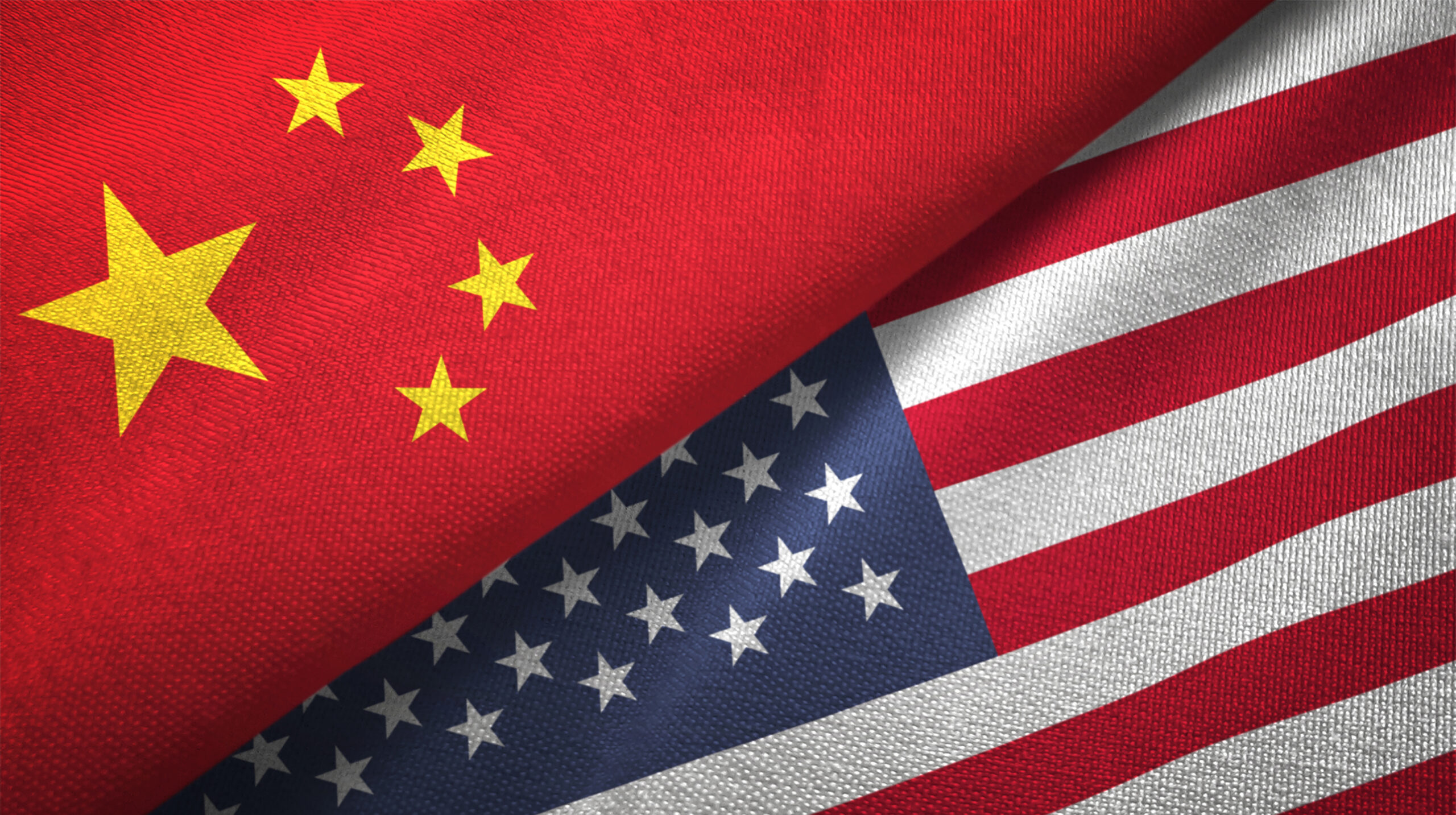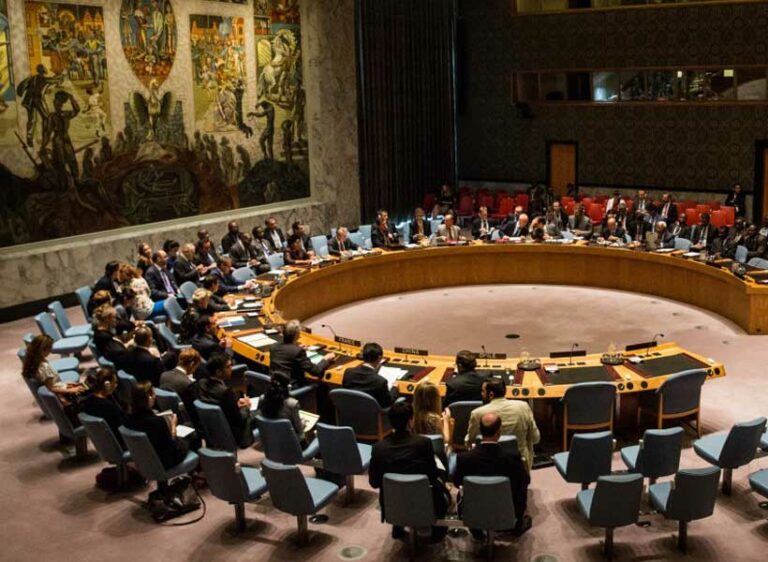From Trade War to New Cold War? Understanding the Relationship Between China and the US
The People’s Republic of China (PRC) and the United States (US) have had a complex relationship since they established diplomatic ties in 1979. Although they have cooperated in areas such as trade, global threats, and cultural exchange, they have also competed in military and economic fields. In recent years, the relations between China and the US have become more confrontational.
In this article, we will analyse the main factors shaping the relations between China and the US, their implication on businesses, together with the security vision and strategies in the international arena of both countries and their leaders to assess whether it is a New Cold War context.
Main drivers of the conflict
The growing competition to achieve technological and economic dominance is one of the main elements contributing to the tense relations between China and the US. China has emerged as a great economic power and has been investing intensively in the most potential and growing areas, such as renewable energy, artificial intelligence, and space exploration. Furthermore, the US and China are involved in the geopolitical-economic competition seen in financing and constructing transnational infrastructure led by their domestic firms to include territories into value chains. This has resulted in concerns rising in the US as China has started to threaten American technological and economic leadership.
The increasing assertiveness and territorial aggression of China, especially in the South China Sea, is the second driver of the conflict. China has been artificially building up military installations on islands created on the coral reef and aggressively and illegally claiming sea territory and control over the waters by establishing a “Nine-Dash Line”. The South China Sea conflict involves various countries, such as China, the Philippines, Vietnam, Malaysia, Taiwan, and Brunei. The core of the dispute is the right to own small reefs and islands, as well as to exploit the natural resources in the surrounding waters, including oil and fish. Various incidents have been registered, including collisions between Vietnamese and Chinese ships and between Chinese and Philippine vessels. The South China Sea conflict is a potential trigger for wider geopolitical conflict.
Security vision
The US has created a system of military bases and alliances in the Far East since the end of World War II. To maintain stability and prevent communism’s spread in the region, the US has secured close relationships with South Korea and Japan, further sealed by the US-Japan Security Treaty. In response to China’s expansion of influence in the region, the Obama Administration declared a pivot to Asia in 2011. The Trump administration engaged in a trade war with the PRC imposing tariffs on Chinese goods, which worsened the trade relations between the two countries. Currently, the American security vision in the Far East has put strong attention on opposing the rising influence of China in the region under the Biden administration. President Biden has underlined the significance of multilateralism and strong collaboration with the US allies and partners in the region, such as Australia, South Korea, and Japan to repel China’s assertiveness in the South China Sea and to pursue an open and free Indo-Pacific. Additionally, the US has sought to maintain and increase its military capacity in the region.
China’s security vision in the Far East, on the other hand, has shifted over the past few decades from focusing mainly on internal stability and maintaining the Communist Party’s hold on power to growing assertiveness in its foreign policy, especially in the Taiwan Strait and the South China Sea. With the current Chinese President Xi Jinping coming to power, the PRC has pursued a more assertive and proactive external policy and security vision in the Far East. It is particularly focused on economic development, and stability, increasing its influence in the region and pushing back the American dominance in the area. Moreover, the PRC’s security vision in the Far East is concentrated on the “Chinese Dream” concept underlining China’s reawakening as a global power able to influence the international stage. To achieve it, China has expanded and modernised its military and naval capacities putting great attention on developing advanced technologies, for instance, hypersonic missiles and artificial intelligence. Additionally, the PRC has focused on expanding its soft power in the region by promoting its economic and cultural influence. Moreover, China’s objective has been to seek influence by developing closer links with the countries in the region. In this vision, China’s Belt and Road Initiative (BRI) aims to connect Asia, Europe, and Africa through infrastructure development, promoting trade and investment, and enhancing connectivity.
Is it a new Cold War context?
Given the tensions between China and the US, some scholars and analysts have drawn parallels between the current state of relations and the Cold War between the US and the Soviet Union. However, it is important to note that while there are certainly similarities, there are also significant differences that set the current situation apart.
One of the key differences is that unlike during the Cold War, there is significant economic interdependence between China and the US. Both countries rely on each other for trade, investment, and technology, which makes decoupling much more difficult than it was between the US and the Soviet Union. Furthermore, while there is certainly competition between the two countries, there is also a level of cooperation in areas such as climate change and global health issues. Another difference is that during the Cold War, the conflict was primarily ideological, with the US and the Soviet Union representing competing political systems. While there are certainly ideological differences between China and the US, the conflict is more about geopolitical and economic competition than it is about ideology. That being said, there are certainly some similarities to the Cold War. Both conflicts involve two global superpowers vying for dominance, with significant military capabilities and alliances with other countries. Additionally, there is a sense of zero-sum competition, where one country’s gain is seen as the other’s loss. This can lead to a dangerous cycle of escalation, as each country seeks to counter the other’s actions.
Implications for businesses
The tensions between China and the US have significant implications for businesses operating in both countries, as well as for those that rely on trade and investment between the two countries. One major concern is the potential for decoupling, where the US and China disentangle their economies and reduce their economic interdependence. This could lead to disruptions in supply chains, increased costs for businesses, and decreased economic growth.
Furthermore, businesses operating in China may face increased scrutiny and regulation, particularly in areas related to national security and technology transfer. In recent years, the Chinese government has tightened regulations around foreign investment and technology transfer, particularly in sensitive industries such as semiconductors and telecommunications. This has led some companies to reconsider their presence in China, or at least to adjust their strategies to account for the changing regulatory environment.
Finally, businesses may face pressure from consumers and other stakeholders to take a stance on issues related to China-US relations, particularly those related to human rights and national security. Companies that are seen as supporting one side or the other could face backlash from consumers, which could have significant impacts on their reputation and bottom line.
Conclusion
The relationship between China and the US is complex and multifaceted, with elements of cooperation and competition. While there are certainly similarities to the Cold War, there are also significant differences that set the current situation apart. However, the tensions between the two countries have significant implications for businesses operating in both countries, as well as for those that rely on trade and investment between the two countries. As the situation continues to evolve, it will be important for businesses to stay informed and adjust their strategies accordingly. Moreover, both countries have significant roles in shaping international security policies and responding to global security threats. As the world becomes increasingly interconnected, China and the US need to find ways to cooperate and manage their differences to promote global stability and prosperity. To manage their relationship, China and the US must engage in open and honest dialogue, build mutual trust, and find ways to cooperate in areas of common interest. This will require both countries to set aside their differences and work towards a common goal of promoting global stability and prosperity.
Bibliography:
Campbell, C. and Salidjanova, N. (2016). South China Sea Arbitration Ruling: What Happened and What’s Next? [PDF]. U.S.-China Economic and Security Review Commission.
Dunford, M. and Liu, W., 2019. Chinese perspectives on the Belt and Road Initiative. Cambridge Journal of Regions, Economy and Society, 12(1), pp.145-167.
McCarthy, S. and Picheta, R. (2023) China’s XI stresses close ties with ‘dear friend’ Putin during his first visit to Russia since the Ukraine invasion, CNN. Cable News Network. Available at: https://edition.cnn.com/2023/03/20/europe/xi-putin-china-russia-visit-monday-intl-hnk/index.html (Accessed: March 21, 2023).
Pu, X. and Wang, C., 2018. Rethinking China’s rise: Chinese scholars debate strategic overstretch. International Affairs, 94(5), pp.1019-1035.
Schindler, S., DiCarlo, J. and Paudel, D., 2022. The new Cold War and the rise of the 21st‐century infrastructure state. Transactions of the Institute of British Geographers, 47(2), pp.331-346.
Taffer, A. D. and Walish, D. (2023) China’s Indo-Pacific Folly: Beijing’s Belligerence Is Revitalizing U.S. Alliance, Foreign Affairs.
Author: Natalia Górzyńska







